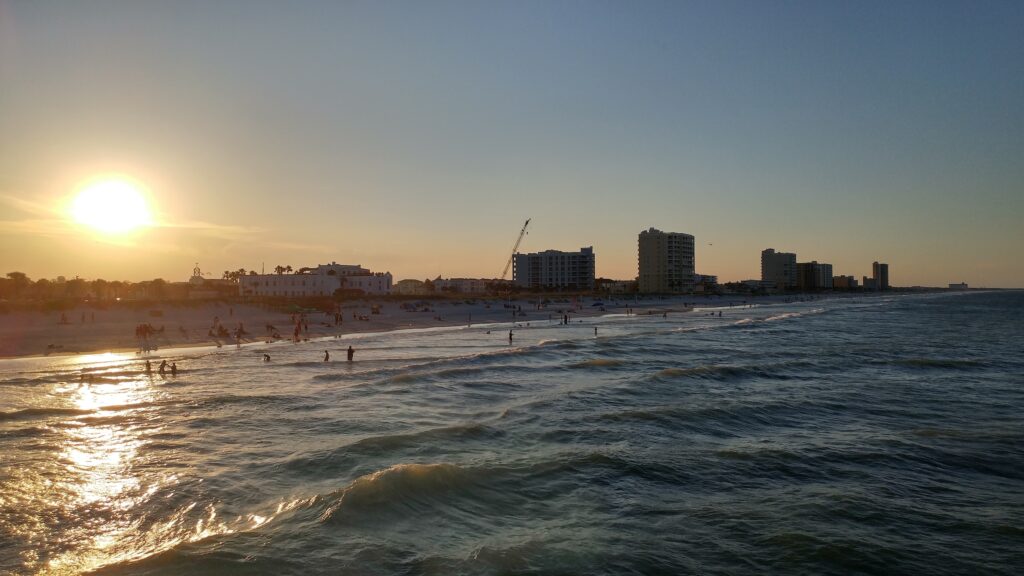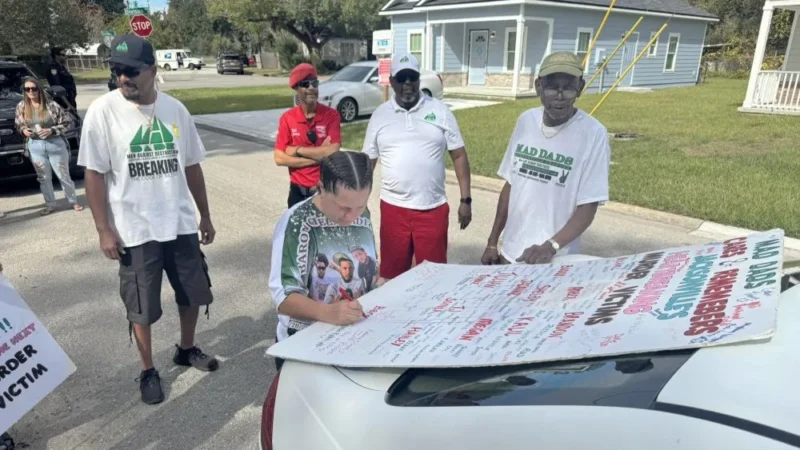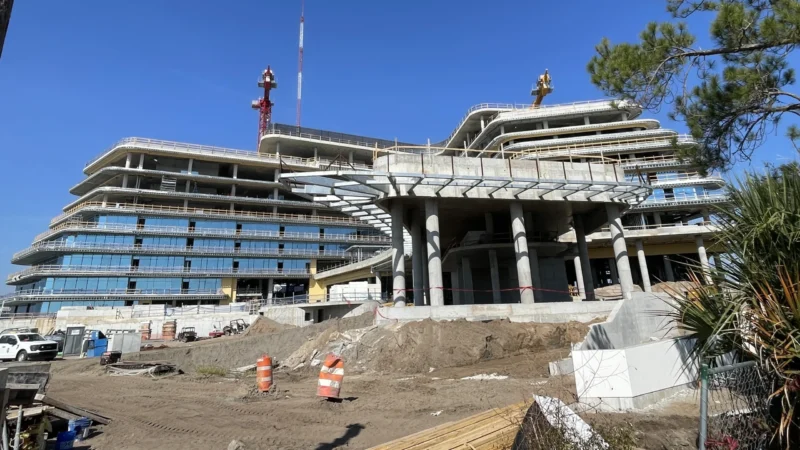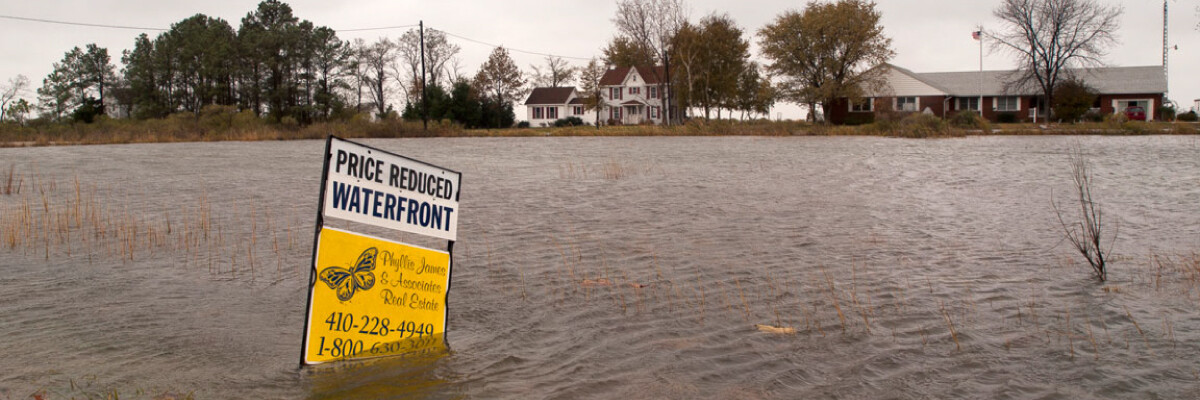Long before rising seas permanently swamp homes, millions of Americans living in coastal communities will likely face more frequent and disruptive high-tide flooding — and the effects will ripple through the local economy.
As the flooding increases over time, coastal residents will be forced to make difficult and costly choices. And if home values decline, an eroding property tax base would jeopardize funding for local services and infrastructure, such as roads, schools, and police and fire departments.
Shana Udvardy, climate resilience analyst with the Union of Concerned Scientists, said homeowners could find themselves with mortgages that exceed the value of their homes, which will be increasingly difficult to insure.
Udvardy believes some homeowners will abandon their properties as they did during the 2008 financial crisis. Banks would then foreclose on those properties. And banks holding risky mortgages on devalued properties — you remember the Great Recession, right?
This expected financial blow from coastal flooding is increasing the urgency some scientists express about addressing the impacts of climate change. The Union of Concerned Scientists estimates $351 billion worth of Florida homes will be at risk from tidal flooding by the end of the century, including a significant portion on the First Coast.
“Sea level rise is like a giant, slow hurricane coming, relentlessly, toward Florida, and it’s not going away.”
— Ben Strauss, CEO and chief scientist at Climate Central
Within the next 30 years alone, worsening tidal flooding nationwide could put as many as 311,000 homes, with a collective market value today of about $117.5 billion, at risk of chronic flooding, according to the union’s report, Underwater.
The analysis combined property data from the real estate website Zillow with a peer-reviewed methodology.
“Unfortunately in the years ahead, many coastal communities will face declining property values as risk perceptions catch up with reality,” said report co-author Rachel Cleetus, an economist and policy director at UCS.
The scientists modeled three sea level rise scenarios developed by the National Oceanic and Atmospheric Administration. Several First Coast ZIP codes are expected to be at risk under the intermediate scenario, which is a “moderate” rate of ice sheet loss contributing to a rise of 4 feet by the end of the century:
32034 in Fernandina Beach
By 2100, 1,590 of today’s homes are at risk of becoming chronically inundated.
- That’s about 7% of the homes in that ZIP code
- Today those homes are collectively worth more than a half-billion dollars
- They house an estimated 2,686 people
- They contribute about $8 million to the local property tax base
32250 in Jacksonville Beach
By 2100, 1,861 of today’s homes are at risk of becoming chronically inundated.
- That’s about 14% of the homes in that ZIP code
- Today those homes are collectively worth more than a half-billion dollars
- They house an estimated 3,426 people
- They contribute about $7.7 million to the local property tax base
32082 in Ponte Vedra Beach
By 2100, 5,392 of today’s homes are at risk of becoming chronically inundated.
- That’s about 34% of the homes in that ZIP code
- Today those homes are worth a collective $2.5 billion
- They house an estimated 10,403 people
- They contribute more than $31 million to the local property tax base
The danger isn’t all that far off though. Florida municipalities could take a large hit to their property tax revenue as soon as 2045, the report says. By that year, about 64,000 of today’s Florida houses — currently home to more than 100,000 people — are at risk of chronic inundation.
Udvardy said, “[In] just one community in your area, Ponte Vedra, there are about 902 homes that are at risk [by 2045]… And as we go into the future, it’s likely that homes are going to be devalued and commercial properties may also be devalued as we see more flooding at every high tide.”
Northeast Florida won’t be the only place affected. Miami, the Florida Keys and the Tampa-St. Petersburg area all stand out as being highly exposed within the next 25 years.
And according to the analysis, Florida is the state with the most homes at risk — about 1 million, or more than 10 percent of the state’s current residential properties — followed by New Jersey, with 250,000 homes, and New York, with 143,000 homes. Florida is also the state that could lose the most in home property values by 2100: $351 billion, followed by New Jersey at $108 billion and New York at nearly $100 billion.
‘Not A Long-Term Investment’
Despite this risk, most homeowners, communities and investors are not behaving as if they’re aware of the financial losses they may face, and property values remain relatively stable.
Still, Ben Strauss, CEO and chief scientist at Climate Central, said, “Research shows that home values in the lowest coastal areas in the United States, including Florida, are already lower than they should be because of sea level rise, and those values are simply going to continue to depress, relative to where they should be. It’s not a long-term investment, building in the low coastal zone today.”
In spite of this outlook, the percentage growth rate of new homes built in America’s highest-risk coastal flood zones is outpacing the percentage growth rate outside of those areas in more than half of coastal states, according to Ocean At The Door: New Homes And The Rising Sea, a research report from Climate Central and Zillow.
“Risk zones” are defined as areas expected to suffer, on average, at least one coastal flood per year in 2050 under the median projections for sea-level rise based on this study.
In Florida, the recent home growth rate in risk zones is about on pace with growth in safer areas. The study finds 908 new homes (51 of them in Jacksonville) were built in risk zones between 2009 and 2016.
One industry that has taken notice: insurance. Strauss said it’s already a lot more expensive in some coastal areas, and those costs are only going to continue to rise as flooding becomes more frequent and more intense.
And amidst visual reminders like the historic flooding brought by Hurricane Irma in 2017, Strauss believes most people understand the climate is changing.

“When it’s that plain to see, you’ve got to understand this is a real risk. Even if you don’t feel attached to any particular explanation, there’s obviously a trend, there’s obviously a change. And honestly, the whole scientific establishment is behind one explanation. I think that’s got to register,” he said.
Strauss added, “I think, though, most homeowners will find that the real protection comes either from organizing together to get their municipality or state to help protect the neighborhood and build resilience or, they may want to consider carefully, whether and how long they want to stay.”
A Call For Collective Action
The major change that’s needed, according to the scientific consensus, is to reduce carbon emissions because an excess of carbon dioxide and other greenhouse gases in the atmosphere from burning fossil fuels like coal and natural gas has caused the earth to warm. Reducing emissions could include expanding the use of renewable energy, increasing fuel efficiency standards for vehicles, limiting the amount of carbon that industry is allowed to emit, and investing in efficient energy technologies.
“About 93 percent of Florida’s at-risk homes could avoid chronic flooding by the end of the century if nations adhere to the primary goal of the Paris Climate Agreement and there is limited loss of land-based ice,” Udvardy said.
The Paris accord calls for reducing carbon emissions enough to keeps warming to less than 2 degrees Celsius.
“This financial impact really underscores the urgency of reducing emissions and keeping the melting of ice sheets at bay,” Udvardy said.
The most important action that coastal communities can take, according to Strauss, is to start preparing for flooding as soon as possible.
“If a hurricane is coming, every day of forecast you have makes a big difference in lives and dollars protected,” he said. “Sea level rise is like a giant, slow hurricane coming, relentlessly, toward Florida, and it’s not going away. Every decade of warning that we have gives us a little bit more time to get out of the way or to prepare and harden our structures and can save a lot of dollars.”
Copyright 2019 ADAPT










